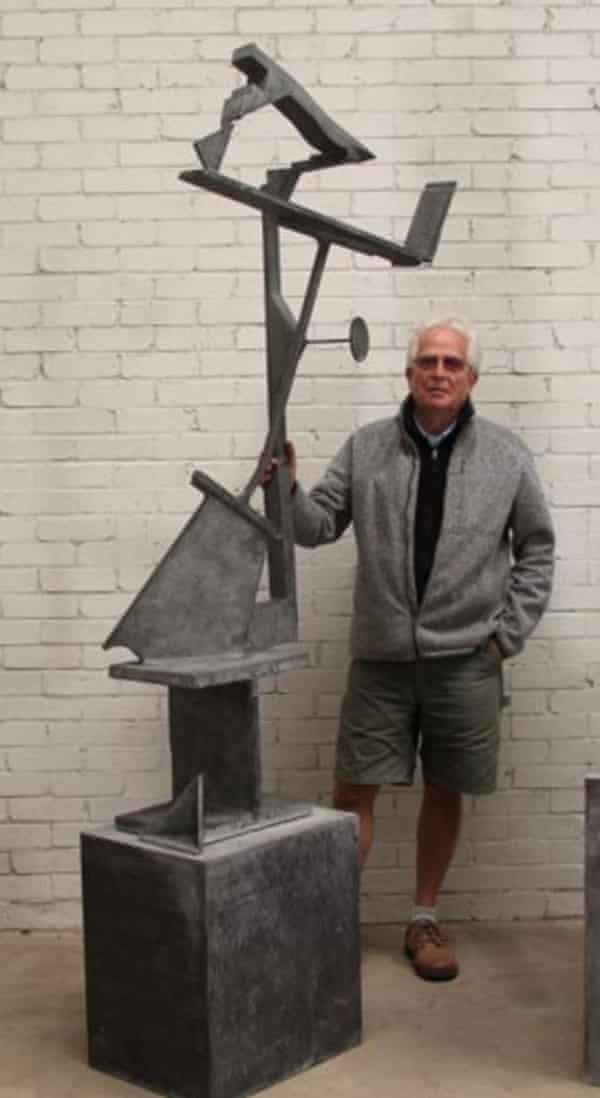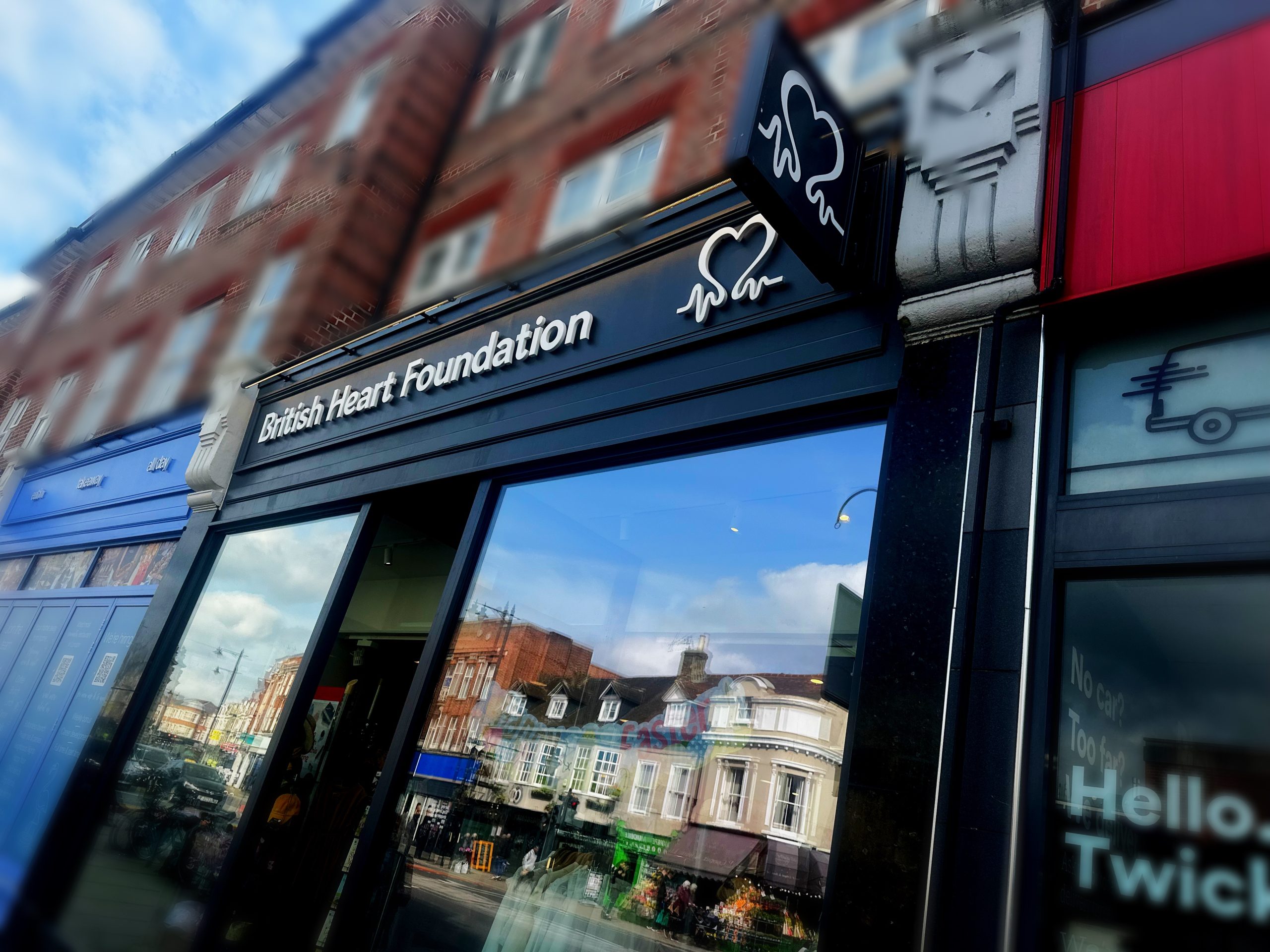The Millennium Fountain in Cannizaro Park, Wimbledon, south-west London, stands out in the sculptor Richard Rome’s nearly 60-year career as strikingly different in appearance from his usual large-scale abstract structures in painted steel and patinated bronze. With its formal nod simultaneously towards Henry Moore and the picnic teapot (the name it soon acquired from visitors), the relaxed and half-reclining portly shape relieves itself with endless streams from four stubby spouts that make patterns in the water of the surrounding pool.
The only water feature he ever attempted, the design embodies a fun day out in nature and was the nearest this diffident individual came to expressing in his art the light-hearted and playful side of his personality.
Yet his work always considered both its surroundings and those who moved around it. In a retrospective installation in Canary Wharf, in London’s Docklands, in 2017, his pieces were placed both indoors and outdoors, mingling with commuters and workers between lofty vestibules and column-like lift shafts, and among park benches and green spaces.
Richard, who has died aged 79, first attracted critical attention in the 1970s, when he displayed his longstanding interest in the physical geometry and emotional experience of built environments at an exhibition at Kingston-upon-Thames Museum and Art Gallery (1972). There he constructed a low rectangular platform that occupied the entire floor area except for a narrow margin around the walls where visitors could stand.
W1 (1977) by Richard Rome, as seen in the retrospective installation at Westferry Circus, Canary Wharf, London, in 2017. Photograph: Courtesy of Canary Wharf Group
Three years later, for the Serpentine Gallery’s Summer Show 2, he inserted 12-metre-high triangular plaster corners that echoed those of the building’s cube gallery. He then added free-standing partitions of the same height to the interior space, thus involving spectators in renegotiating the altered configuration of otherwise familiar territory.
Towards the end of the decade he returned to making stand-alone sculptures, yet in contrast to the dominant influences at the time of Moore and Anthony Caro, both of whom Richard admired, and his peers, who predominantly welded metal into compositions that stressed gravity and pressure, Richard most often constructed and, later, cast objects distinguished by their poise and balance.
His Steel Sculpture No 1 (1979), once sited in the Great Cloister of Canterbury Cathedral (now at Millfield school), resembles a precarious stack of thickset, curved elements that nonetheless maintains its formal cohesion. Lugubrious but animal-like, latent with energy, the sculpture gives the impression of lifting itself up from its base (Richard was not averse to including plinths, unlike many of his contemporaries).
Even when modest in size, his compositions projected an assumption of monumentality that was never overwhelming. Emphasis was placed on massing diverse and loosely geometric elements into upright structures that implied shelter or habitat. An example is his patinated steel construction Pepper Rock (1993-97), now standing in Bishopsgate, in the City of London, where a rectilinear frame appears to surround a grouping of diverse shapes like a protective arm.
Born in Harpenden, Hertfordshire, Richard was the son of Sidney Rome, an amateur painter and marine engineering draughtsman, and his wife, Elsie (nee Gosling). His first job after St Albans grammar school for boys was with the construction firm Trollope & Colls, as a trainee quantity surveyor. The mechanics of building and architecture impressed him, and at St Albans School of Art, where he studied for his diploma in fine art (1962-64), he gravitated towards sculpture. That choice was facilitated by two tutors he encountered there: the sculptors George Fullard and John Wragg, both of whom exerted a long-lasting influence.
On completing a postgraduate year at Chelsea School of Art in 1966, where Fullard and Wragg also taught, Richard became a tutor at Brighton School of Art. There he met Sally Gollop, a painting student, and they married in 1969.
 Richard Rome with one of his works
Richard Rome with one of his works
His abstract sculpture never fully relinquished allusions to the body and physical movement. These references were seldom overt but invariably present, such as in his first formally significant piece after graduation, Night and Day (1966-67). It has two elements with linear silhouettes cast in glass-reinforced plastic and spray-painted with auto lacquer of contrasting colours that appear to keep step together.
However he soon moved away from the synthetic resins that were fashionable among the progressive New Generation British sculptors in the 60s, such as Phillip King and Tim Scott, and began constructing with steel in the manner pioneered in the UK by Caro.
The results were then either painted with primary colours or patinated. One of these works, W1 (1977), was installed on a grassy, open area in the Canary Wharf show: the large, angular and red sculpture made a strong impact against a uniform background of office blocks.
Richard dedicated his career to both making and teaching. Following a brief stint at Walthamstow College of Art, in 1975 he moved to Canterbury College of Art, where he was a senior lecturer for 14 years, then led the site-specific sculpture course at Wimbledon School of Art until a move to the Royal College of Art in 1991, where he stayed until retirement in 2008.
There he taught bronze casting, on which he was an acknowledged authority; he wrote the standard guide to casting metals from moulds (with Hamish Young), published by Robert Hale in 2003. He also renovated the sculpture department’s foundry in a typically practical manner that provided a model for other institutions.
Reserved by nature, Richard was reluctant to promote his work. Nonetheless, contemporaries admired him and his best opportunities were invitations from fellow artists. As well as the Serpentine, he exhibited objects in wax and bronze at the Hayward Gallery, at the Hayward Annual 1979, selected by the sculptors Hubert Dalwood and Nicholas Pope respectively. In the US, he participated in Caro’s Triangle Workshops, and was resident artist at the Sculpture Space at Utica, New York, in 1984.
After years living between his home in Southwark and studio in Kent, in retirement he moved to the Isle of Wight to be near his son William’s young family. Always an acute observer and adventurer, rafting down the Colorado river through the Grand Canyon five times, he discovered in his 60s his skill as a proficient yachtsman.
His marriage to Sally ended in divorce in 1982. He is survived by William, his grandson, Freddie, and his sister, Elizabeth.
Richard Rome, sculptor and tutor, born 8 January 1943; died 17 January 2022
https://www.theguardian.com/artanddesign/2022/apr/06/richard-rome-obituary




